- Article tells you about the
Rulers of Mandi, their Bengal origins, the states of Mandi and Suket and the
Trilokinath Mandir.
Mandi district as we now see was
formed by merging the two princely states of Mandi and Suket, when the State of
Himachal Pradesh was created post independence.
The kings of Mandi and Suket are
believed to be descendants of the mighty Sena dynasty of Bengal. After the
Islamic invasion of Bengal in 1204 where the Sena dynasty lost Gaur, some
members of the royal family fled to Ropar in Punjab, where King Rup Sen was
killed. One of his sons, Bir Sen, then moved to the hills where he formed the
State of Suket.
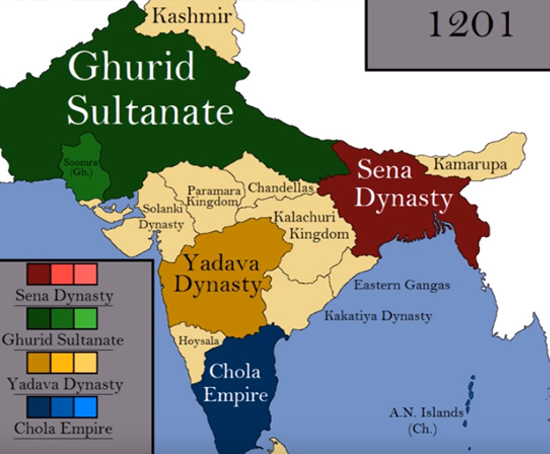 Sena dynasty in 1201 CE, photo from the internet.
Sena dynasty in 1201 CE, photo from the internet.
Detail caption - The Senas are believed to have come from Karnataka who settled in Bengal and filled up the space left behind by a declining Pala empire, from around 1070 CE. Despite losing grounds to the devastating attacks by Bakhtiyar Khalji in 1203–1204 CE when the Sena dynasty lost north-east Bengal, the eastern parts of Bengal remained under the Senas until 1230 CE. The Sena dynasty were prolific temple builders, and it is believed that they had also built a temple in Kashmir, known as Sankara Gaureshwara.
While the princely state of Mandi was created sometime in the 13th century by Bahu Sen, the city of Mandi emerged as a separate entity much later, at the beginning of the 16th century. It is believed that the Suket king Sahu Sen quarrelled with his younger brother Bahu Sen, and the latter then left Suket. Bahu Sen later established an independent territory at Manglan in Kullu, and became a local ruler (a Rana) of the Mandi state. It was his descendant Raja Ajber Sen (the 19th descendant of Bahu Sen), who founded the present Mandi city centered around the ‘Bhootnath Temple’ between 1500 CE-1534 CE, building his palace near this temple. The temple of Trilokinath was constructed during his reign by his queen.
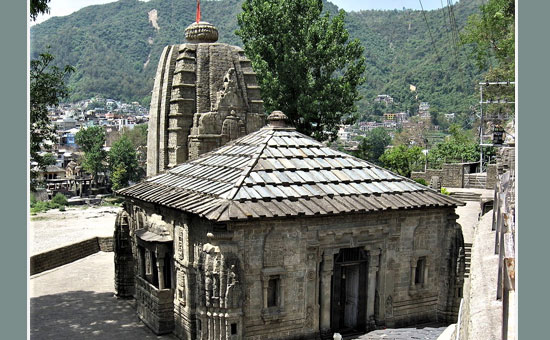 The temple of Trilokinath constructed by Ajbar Sen’s queen. Pic from Wikipedia.
The temple of Trilokinath constructed by Ajbar Sen’s queen. Pic from Wikipedia.
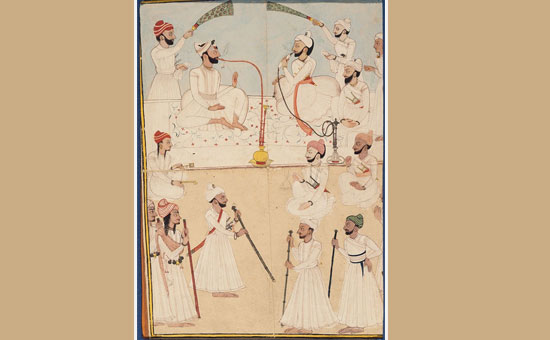 Raja Ranjit Sen of Suket n Raja Shamsher Sen of Mandi in the Darbar; ca. 1772, LACMA.
Raja Ranjit Sen of Suket n Raja Shamsher Sen of Mandi in the Darbar; ca. 1772, LACMA.
The
history of Mandi and Suket states is replete with frequent wars with each other, and also with the other adjoining states. While Mandi and Suket remained bitter rivals, they refrained from producing any devastating effects on each other’s States. Their main bone of contention was the fertile valley of Balh, and both the States wanted control over it.
In February 1846 the rulers of Mandi and Suket met Mr.
Erskine, the then British Superintendent of the Hill States of India, and
pledged their allegiance to the British government, and in return they secured
the protection of the British. Within a month a treaty was signed, which
allowed the secession of the Doab area around Sutlej and Beas (including Mandi
and Suket) from Punjab control to the British government.
Not much is known about the history of the Suket part
before the Senas took control over it, and until 765 CE the area remained indistinct,
as a part of the Punjab Hills. At this time it is believed the area was under
the control of various local chiefs, or ranas and thakurs, and the only place
from this area which finds a mention in the Skandapurana as a teerthbhumi, is Rewalsar.
However, the area is full of stories associated with
the Mahabharata, and a small village named Karanpur is believed to have been
found by Karna, the son of Kunti. Another temple at village Gumma marks the
area as the place where the Pandavas stayed after escaping from Lakshagriha.
In the first half of the 20th century, Raja Suraj Sen,
who did not have an heir, dedicated the State to God Madhav Rao (Krishna).
His successors still hold the State in trust for the God and act as Madhav Rao’s representatives on various festivals and other formal occasions. Madhav Rao is the guardian deity
of the state/district, and all state/district occasions are held in
honour of him. He is also the principal deity of all the gods worshipped within
the state /district of Mandi.
Among the most famous celebrations is the Shivratri Mela, where all the local
deities gather in Mandi city to pay their respects to Madhav Rao. During Holi,
Madhav Rao is carried in a chariot and taken to the nearby Bhootnath temple for
a visit, and as he returns at day end to his own abode in the palace, the Holi
celebrations also stop. The main prasad at this
time is luchi, a Bengali version of the puris.
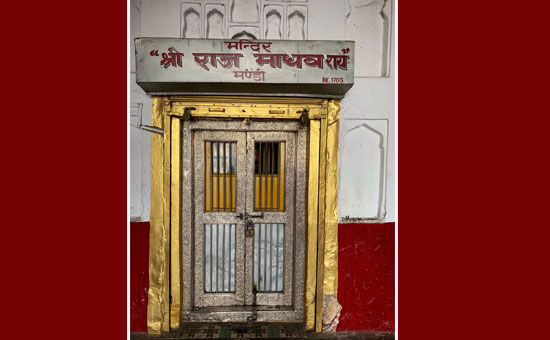 A beautiful Krishna murti adorns the sanctum.
A beautiful Krishna murti adorns the sanctum.
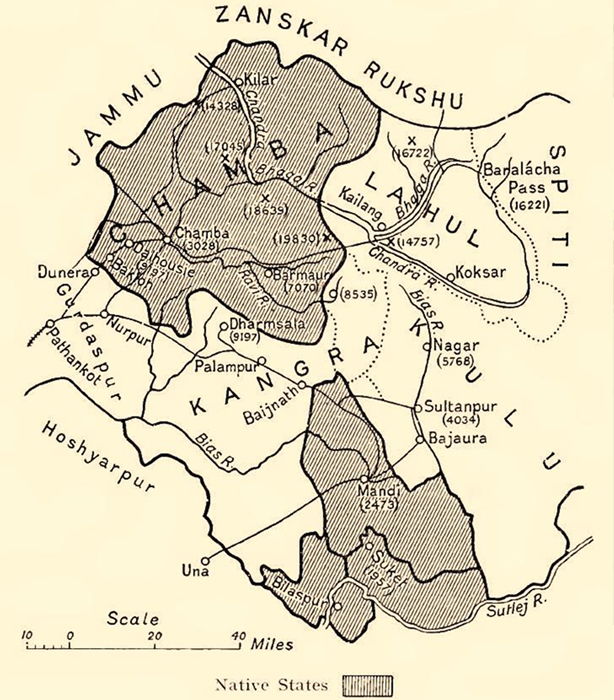 Map of some Indian princely states in the “Shimla Hill/Punjab Hill Agency” showing Mandi and Suket, 1911.
Map of some Indian princely states in the “Shimla Hill/Punjab Hill Agency” showing Mandi and Suket, 1911.
Trilokinath Temple in Mandi
 Panchavaktra temple as seen from Trilokinath temple.
Panchavaktra temple as seen from Trilokinath temple.
Located in the Purani Mandi part and close to the main
bus stand on the Mandi-Pathankot National Highway, this temple was built by
Sultan Devi, queen of Raja Ajber Sen. The
sanctum houses a murti of Shiva and devi Parvati. There is also a stone murti
of a three faced Lord Shiva inside the
temple which gave the temple its name Trilokinath. A beautifully carved
standing Nandi faces the sanctum. The shrine also has houses sculptures of
Goddess Narda and Goddess Sharda, along with many other Hindu deities.
Standing on the temple courtyard one can view the
beautiful Beas flowing by its side, and the Panchavaktra temple which stands
just opposite, on the other side of the Beas. The temples are tri ratha to
pancha ratha types, with a curvilinear shikhara of the Nagara style and the
amalaka and Kalash on top.
The shikhara of the main temple, which is pancharatha, is now devoid of any
design, but originally held chaitya dormers in relief as evident from some
parts still showing the design. There are detailed and heavy ornamentations on
the temple walls right up to the plinth, with sculptures of Shiva and Parvati
on the bull, Mahisasuramardini,
hunting and dancing scenes, among various others, that adorn the walls. The
temple walls have many niches, and one of the cardinal niches holds two fluted
pillars and a beautiful Brahma in it.
Interestingly, the mandapa of the main temple has four
projections on its four corners that show a stellar pattern rising from the
base and forms almost like four separate shrines, each with a shikhara and
amalaka of their own. There are open vatayans
or windows on two sides of the mandapa wall, one of which still carries the
original design and shows a beautiful pillared window with a jutting out
ornamented balcony like structure, or a kakhsanana.
The mandapa shikhara is pyramidal. There is a sukhnasika on which stands a lion. The
garbagriha outer walls hold small niches with small shikharas on top. The
smaller temples show triratha plan with chaitya dormer carvings on their
shikharas in relief and amalakas on the side marking the talas. The walls in
two of these smaller temples show ornamentation, while the third one holds
plain walls. The walls have niches on all three sides of the three smaller
shrines.
Note: while the ASI board says the temples were built
in the 16th century, from the older pillars still visible inside the later
period thick pillars in the temple mandapa, and the tri ratha styles of the
smaller shrines, I personally feel the temples could originally go back further
to 7th- 11th c. CE, and the Rani most likely renovated these or built over the
partially ruined older temples keeping the older parts intact.
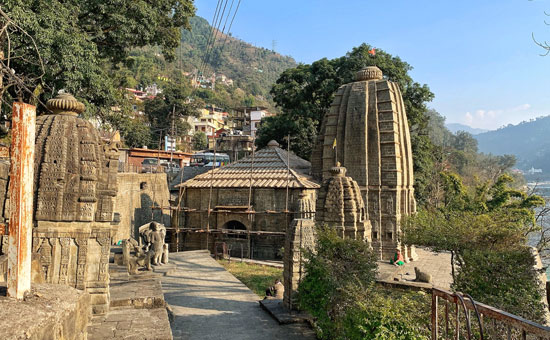

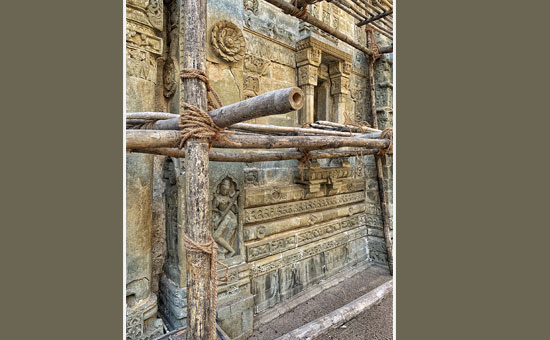

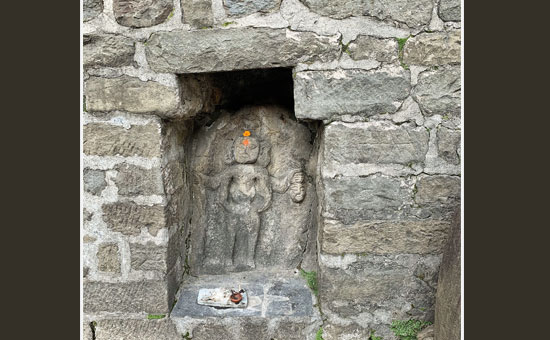 Devi Kali.
Devi Kali.
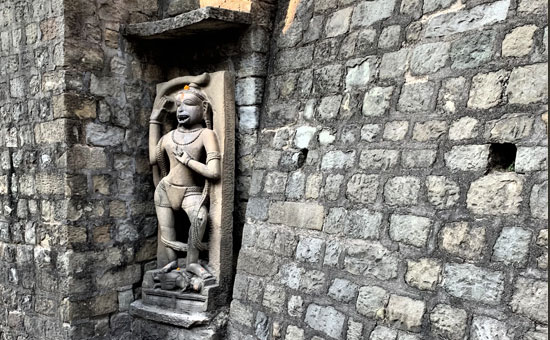
 Herostones.
Herostones.
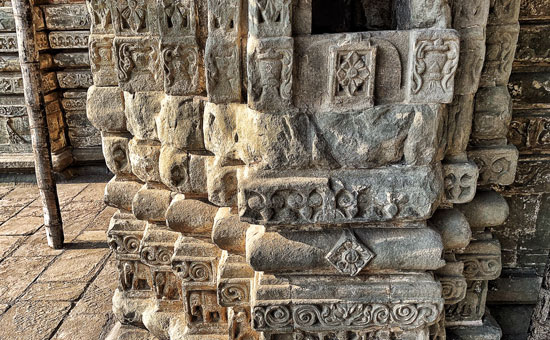

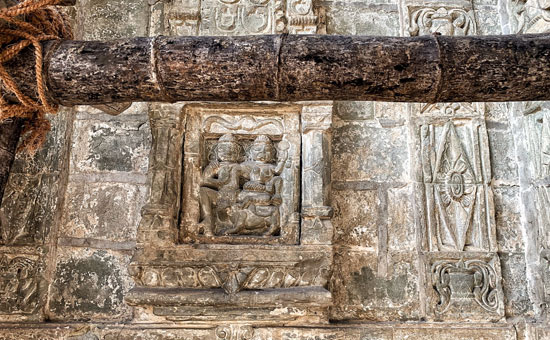
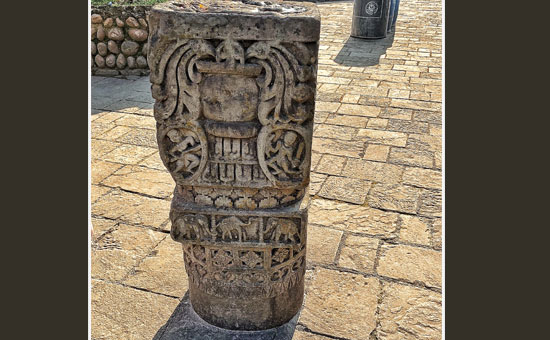
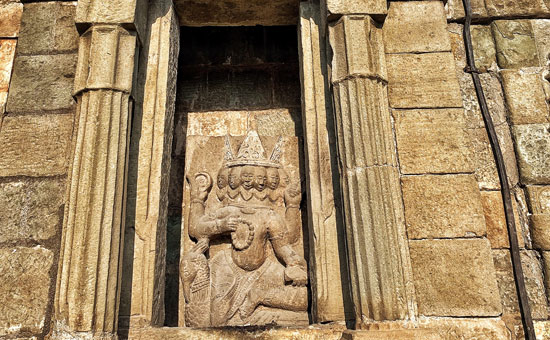
Inside the temple: there is a mandapa, antarala, and a garbagriha
![]()
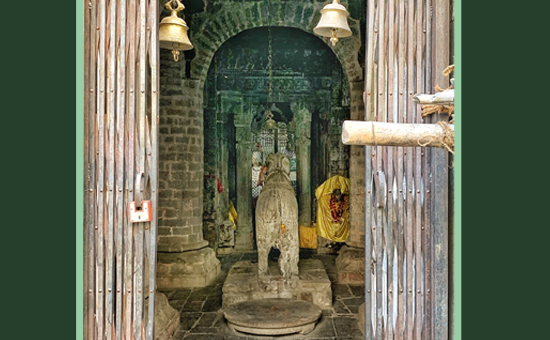
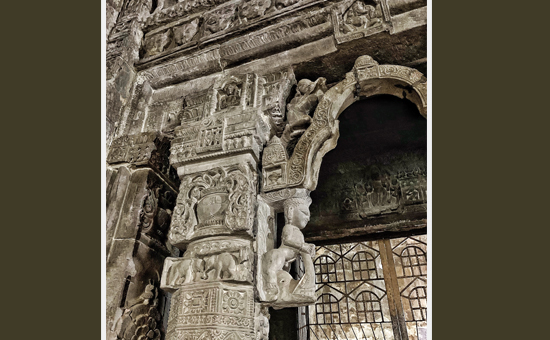
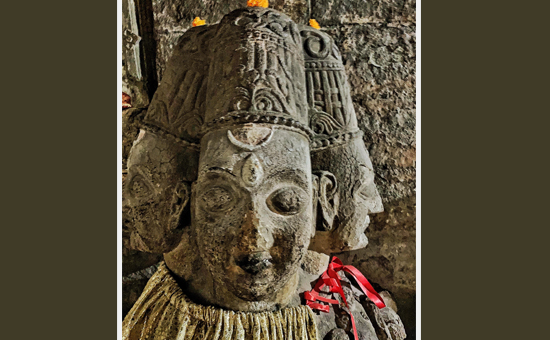 The three faced Shiva which gives the temple name Trilokinatha.
The three faced Shiva which gives the temple name Trilokinatha.
 Vishnu Avtaars, Matsya avtaar shown with the four Vedas.
Vishnu Avtaars, Matsya avtaar shown with the four Vedas.
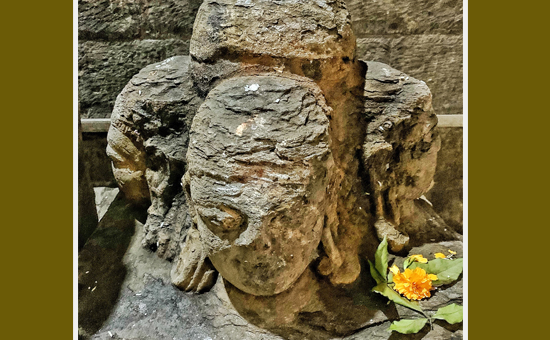 Panchamukha Linga.
Panchamukha Linga.
To read all articles by author
Author studies life sciences, geography, art and international relationships. She loves exploring and documenting Indic Heritage. Being a student of history she likes to study the iconography behind various temple sculptures. She is a well-known columnist - history and travel writer. Or read here
Article was first published on author’s blog and here
Article and pictures are courtesy and copyright author.